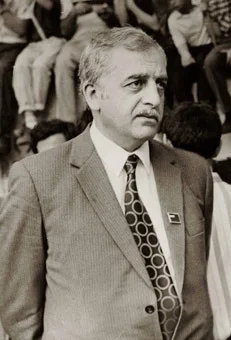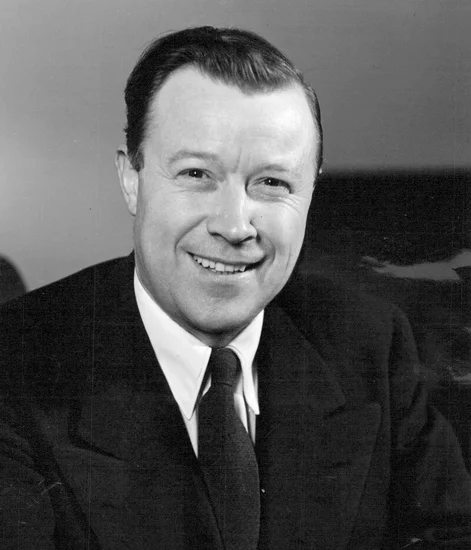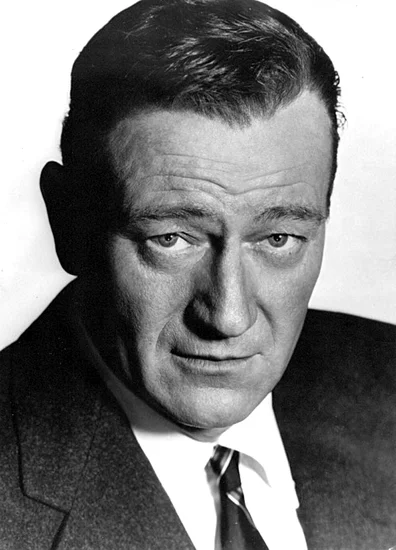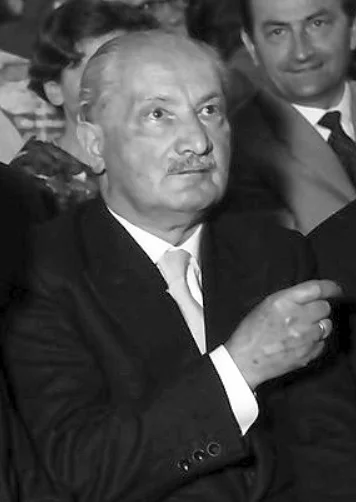May 26 stands as one of history’s most eventful days, witnessing the rise and fall of empires, groundbreaking discoveries, and moments that shaped our modern world across centuries of human achievement.

Politics and Government Events on May 26
1918 – The Democratic Republic of Georgia is established
Georgia declared its independence from the Russian Empire following the collapse of the Transcaucasian Federation. The newly formed republic faced immediate challenges from neighboring powers and internal political divisions.
The democratic government struggled to maintain stability amid territorial disputes and economic hardships. Despite these challenges, the republic represented a brief period of Georgian self-determination before Soviet occupation.
1948 – The U.S. Congress passes Public Law 80-557, which permanently establishes the Civil Air Patrol as an auxiliary of the United States Air Force
Congress formally recognized the Civil Air Patrol’s vital role in national defense and emergency services. The legislation granted the organization official status within the Air Force structure.
This law ensured the Civil Air Patrol’s continued existence and funding for search and rescue operations. The organization became an integral part of America’s homeland security infrastructure.
1966 – British Guiana gains independence, becoming Guyana
The South American colony achieved independence from British colonial rule after decades of political struggle. Forbes Burnham became the first Prime Minister of the newly sovereign nation.
The transition marked the end of over 150 years of British colonial administration. Guyana joined the Commonwealth of Nations as a free and independent republic.
1991 – Zviad Gamsakhurdia becomes the first elected President of the Republic of Georgia in the post-Soviet era

Gamsakhurdia won Georgia’s first democratic presidential election with overwhelming popular support. His victory represented the Georgian people’s desire for national independence and democratic governance.
The election marked a crucial step in Georgia’s transition from Soviet republic to independent nation. Gamsakhurdia’s presidency would later face significant challenges from opposition forces and regional conflicts.
1981 – Italian Prime Minister Arnaldo Forlani and his coalition cabinet resign following a scandal over membership of the pseudo-masonic lodge P2
The P2 scandal exposed widespread corruption within Italian political and business circles. Forlani’s government collapsed when connections to the secretive lodge became public knowledge.
The crisis revealed the extent of illegal masonic influence in Italian institutions. This scandal contributed to ongoing political instability that plagued Italy throughout the 1980s.
1972 – The United States and the Soviet Union sign the Anti-Ballistic Missile Treaty

The ABM Treaty represented a crucial breakthrough in nuclear arms control during the Cold War. Both superpowers agreed to limit their deployment of anti-ballistic missile systems.
This agreement helped reduce the risk of nuclear war by preventing destabilizing defensive systems. The treaty remained a cornerstone of strategic stability for nearly three decades.
1968 – H-dagurinn in Iceland: Traffic changes from driving on the left to driving on the right overnight
Iceland executed a massive logistical operation to switch traffic flow patterns across the entire country. The changeover required extensive preparation and coordination among government agencies and citizens.
Thousands of road signs were replaced and traffic systems reconfigured during the early morning hours. The successful transition aligned Iceland with continental European driving practices.
Military and Naval History on May 26
1940 – World War II: Operation Dynamo begins with Allied forces starting a massive evacuation from Dunkirk, France
The British Navy launched one of history’s most remarkable rescue operations as German forces closed in on trapped Allied troops. Over 338,000 soldiers would ultimately be evacuated from the beaches of Dunkirk.
The operation involved hundreds of vessels, from naval destroyers to civilian fishing boats. This heroic effort preserved much of Britain’s trained military personnel for future campaigns.
1940 – World War II: The Siege of Calais ends with the surrender of the British and French garrison
The German Wehrmacht completed its capture of the strategic French port city after fierce resistance. The Allied garrison’s sacrifice bought valuable time for the Dunkirk evacuation.
British and French defenders held out for several days against overwhelming odds. Their heroic stand demonstrated the fierce resistance that would characterize the entire war.
1942 – World War II: The Battle of Gazala begins in present-day Libya
German Afrika Korps forces launched a major offensive against British Eighth Army positions in North Africa. The battle would prove to be one of Erwin Rommel’s most significant victories.
The desert campaign intensified as both sides committed substantial armored forces. This battle marked a turning point in the North African theater of operations.
1971 – Bangladesh Liberation War: The Pakistan Army slaughters at least 71 Hindus in Burunga, Sylhet, Bangladesh
Pakistani forces committed horrific atrocities against civilian populations during the independence struggle. The massacre at Burunga represented one of many war crimes documented during the conflict.
These brutal attacks galvanized international opinion against Pakistani military actions. The systematic targeting of civilians contributed to Bangladesh’s eventual independence with Indian support.
1981 – An EA-6B Prowler crashes on the flight deck of the aircraft carrier USS Nimitz, killing 14 crewmen and injuring 45 others
The tragic accident occurred during routine flight operations in the Mediterranean Sea. The electronic warfare aircraft crashed into parked planes, causing secondary explosions and fires.
Damage control teams worked heroically to contain the blaze and prevent further casualties. The incident highlighted the inherent dangers of aircraft carrier operations during peacetime.
Science and Discovery Milestones on May 26
1969 – Apollo program: Apollo 10 returns to Earth after a successful eight-day test of all the components needed for the forthcoming first crewed Moon landing
NASA’s Apollo 10 mission completed the final dress rehearsal for the historic Moon landing. The crew successfully tested the lunar module in lunar orbit without actually landing on the surface.
This crucial mission validated all systems and procedures needed for Apollo 11’s success. The crew came within 50,000 feet of the lunar surface, closer than any humans had been before.
1970 – The Soviet Tupolev Tu-144 becomes the first commercial transport to exceed Mach 2
The supersonic airliner achieved this milestone during a test flight, surpassing the speed of sound by a significant margin. Soviet engineers demonstrated their capability to compete with Western supersonic aircraft development.
This achievement preceded the Concorde’s supersonic flights by several months. The Tu-144 represented Soviet ambitions to dominate commercial aviation technology.
1983 – The 7.8 Mw Sea of Japan earthquake shakes northern Honshu with a maximum Mercalli intensity of VIII

The powerful earthquake generated a devastating tsunami that struck Japan’s western coast. Seismologists recorded significant ground motion across northern Honshu and surrounding regions.
The disaster killed approximately 100 people and caused extensive property damage. This earthquake contributed to improved understanding of tsunami generation and propagation patterns.
1908 – The first major commercial oil strike in the Middle East is made at Masjed Soleyman in southwest Persia
British prospectors discovered substantial petroleum reserves that would transform the region’s economy. The Anglo-Persian Oil Company quickly secured drilling rights to exploit this valuable resource.
This discovery marked the beginning of the Middle East’s emergence as a global energy powerhouse. The oil strike fundamentally altered international politics and economic relationships.
Cultural and Arts Events on May 26
1967 – The Beatles’ album Sgt. Pepper’s Lonely Hearts Club Band is released

This groundbreaking album revolutionized popular music and recording techniques. The Beatles created a conceptual masterpiece that influenced countless musicians and redefined artistic possibilities.
The album’s innovative studio effects and diverse musical styles captured the spirit of the 1960s. Critics and fans immediately recognized it as a landmark achievement in popular culture.
1903 – Românul de la Pind, the longest-running newspaper by and about Aromanians until World War II, is founded

This important publication served the Aromanian diaspora communities across southeastern Europe. The newspaper preserved cultural traditions and provided news specifically for this ethnic minority.
The publication became a vital link connecting Aromanian communities separated by national borders. It played a crucial role in maintaining cultural identity and linguistic traditions.
1995 – Friz Freleng, American animator, director, and producer dies

The legendary animator and director passed away, leaving behind an extraordinary legacy in animation. Freleng co-created iconic characters including Tweety Bird, Sylvester, and Speedy Gonzales.
His work at Warner Bros. defined the golden age of American animation. Freleng’s innovative techniques and comedic timing influenced generations of animators and filmmakers.
Religious and Social Events on May 26
1998 – The first “National Sorry Day” is held in Australia with reconciliation events attended by over a million people

Australians gathered nationwide to acknowledge the historical injustices suffered by Aboriginal and Torres Strait Islander peoples. The day focused on healing relationships between Indigenous and non-Indigenous Australians.
Citizens participated in bridge walks, ceremonies, and community discussions about reconciliation. This historic event demonstrated widespread public support for addressing past wrongs and building a more inclusive society.
1938 – The House Un-American Activities Committee begins its first session in the United States
Congress established this controversial committee to investigate alleged communist and fascist activities within America. The committee would become synonymous with McCarthyism and political persecution.
The HUAC’s investigations would eventually target Hollywood figures, government employees, and ordinary citizens. This marked the beginning of a dark period in American civil liberties and free speech.
1983 – The European Community adopts the European flag
European leaders officially adopted the distinctive blue flag featuring twelve golden stars arranged in a circle. The design symbolized unity, solidarity, and harmony among European peoples.
This symbolic gesture represented growing European integration and shared identity. The flag became a powerful visual representation of European cooperation and democratic values.
Business and Economic Events on May 26
1927 – The last Ford Model T rolls off the assembly line after a production run of 15,007,003 vehicles

Ford Motor Company concluded production of the automobile that revolutionized personal transportation. The Model T’s affordable price made car ownership accessible to millions of ordinary Americans.
This milestone marked the end of an era in automotive manufacturing and American industrial history. The Model T’s success established Ford as a dominant force in the emerging automotive industry.
1937 – Walter Reuther and members of the United Auto Workers clash with Ford Motor Company security guards at the River Rouge Complex during the Battle of the Overpass

UAW organizers attempted to distribute union literature at Ford’s massive manufacturing facility in Dearborn, Michigan. Company security forces violently confronted the union representatives, injuring several activists.
The incident became a pivotal moment in American labor history and union organizing efforts. Photographs of the violence generated public sympathy for workers’ rights and union representation.
1986 – The European Community adopts the European flag
European leaders officially adopted the distinctive blue flag featuring twelve golden stars arranged in a circle. The design symbolized unity, solidarity, and harmony among European peoples.
This symbolic gesture represented growing European integration and shared identity. The flag became a powerful visual representation of European cooperation and democratic values.
Transportation and Infrastructure on May 26
1923 – The first 24 Hours of Le Mans is held in France, becoming the oldest endurance racing event in the world
The inaugural race established what would become motorsport’s most prestigious endurance competition. Thirty-three cars competed in the grueling test of speed, reliability, and driver stamina.
This event revolutionized automotive racing by emphasizing both performance and mechanical durability. The race became an annual tradition that continues to attract international competitors and spectators.
1991 – Lauda Air Flight 004 breaks apart in mid-air and crashes in Thailand, killing all 223 people on board

The Boeing 767 suffered a catastrophic failure during flight, resulting in one of aviation’s deadliest accidents. Investigators determined that an engine thrust reverser deployed during flight, causing loss of control.
The crash led to significant improvements in aircraft design and safety protocols. This tragedy highlighted the importance of rigorous testing and fail-safe systems in commercial aviation.
2002 – The tugboat Robert Y. Love collides with a support pier of Interstate 40 on the Arkansas River, resulting in 14 deaths

The collision caused a section of the bridge to collapse, sending several vehicles into the river below. Emergency responders worked frantically to rescue survivors from the swift-moving water.
This accident prompted nationwide reviews of bridge safety and waterway navigation procedures. The tragedy demonstrated the vulnerability of transportation infrastructure to maritime accidents.
2003 – Ukrainian-Mediterranean Airlines Flight 4230 crashes in Turkey, killing 75

The chartered flight crashed while approaching the airport in poor weather conditions. All passengers and crew members perished in the impact and subsequent fire.
Investigation revealed multiple contributing factors including pilot error and inadequate weather information. The accident led to improved safety standards for charter airline operations.
Sports and Recreation on May 26
1955 – Alberto Ascari, Italian racing driver, dies at Monza

The two-time Formula One World Champion lost his life during a test session at the famous Italian circuit. Ascari’s death shocked the motorsport world and ended the career of one of racing’s greatest talents.
His victories in 1952 and 1953 established him as Ferrari’s first championship-winning driver. Ascari’s technical skill and fearless driving style made him a legend in Formula One history.
1969 – Paul Hawkins, Australian racing driver, dies

The versatile driver competed in Formula One, sports cars, and touring car races throughout his career. Hawkins was known for his aggressive driving style and competitive spirit.
His death marked the loss of one of Australia’s most promising international racing talents. Hawkins had represented his country with distinction in major racing events worldwide.
1954 – Lionel Conacher, Canadian football player and politician, dies

The legendary athlete excelled in multiple sports before entering politics as a Member of Parliament. Conacher was named Canada’s greatest athlete of the first half of the 20th century.
His athletic achievements included professional football, hockey, and baseball careers. Conacher successfully transitioned from sports to public service, representing his constituents with distinction.
Notable Births on May 26
1907 – John Wayne, American actor, director, and producer

The future Hollywood legend was born Marion Morrison in Winterset, Iowa. Wayne’s childhood in the American West would later influence his iconic screen persona.
He would become one of cinema’s most recognizable figures, starring in classic Western and war films. Wayne’s distinctive voice and commanding presence made him a symbol of American masculinity.
1926 – Miles Davis, American trumpet player, composer, and bandleader

The future jazz innovator was born in Alton, Illinois, to a middle-class family. Davis showed early musical talent and received his first trumpet at age 13.
He would revolutionize jazz multiple times throughout his career, pioneering bebop, cool jazz, and fusion styles. Davis became one of the most influential musicians of the 20th century.
1913 – Peter Cushing, English actor

The distinguished actor was born in Kenley, Surrey, England. Cushing would become famous for his roles in horror films and science fiction productions.
His portrayal of Van Helsing in Hammer Horror films made him an international star. Cushing later gained new fame as Grand Moff Tarkin in the original Star Wars film.
1949 – Stevie Nicks, American singer-songwriter

The future rock icon was born Stephanie Lynn Nicks in Phoenix, Arizona. Her distinctive voice and mystical stage presence would make her one of rock’s most beloved performers.
Nicks achieved success both as a member of Fleetwood Mac and as a solo artist. Her songwriting talents and unique vocal style influenced countless female musicians.
1949 – Jeremy Corbyn, British journalist and politician

The future Labour Party leader was born in Chippenham, Wiltshire, England. Corbyn’s political activism began during his university years and continued throughout his career.
He would serve as a Member of Parliament for decades before becoming Labour Party leader. Corbyn’s socialist politics and anti-war stance made him a controversial but influential figure.
1964 – Lenny Kravitz, American singer-songwriter, multi-instrumentalist, producer, and actor

The multi-talented artist was born in New York City to a diverse cultural background. Kravitz’s mixed heritage influenced his eclectic musical style and artistic vision.
He would become known for blending rock, soul, and funk elements in his music. Kravitz’s distinctive sound and striking appearance made him a major force in 1990s popular music.
1966 – Helena Bonham Carter, English actress

The versatile actress was born in Golders Green, London, to an accomplished family. Bonham Carter’s early exposure to literature and politics shaped her intellectual approach to acting.
She would become known for her eccentric characters and collaborations with director Tim Burton. Her fearless performances in both period dramas and fantasy films earned critical acclaim.
1968 – Frederik X, King of Denmark

The future monarch was born Crown Prince Frederik in Copenhagen, Denmark. His birth secured the Danish royal succession and continued the Glücksburg dynasty.
Frederik would receive a comprehensive education preparing him for royal duties. His modern approach to monarchy and dedication to environmental causes have made him a popular royal figure.
Notable Deaths on May 26
1976 – Martin Heidegger, German philosopher and academic

The influential philosopher passed away in Messkirch, Germany, at age 86. Heidegger’s complex philosophical works explored fundamental questions about existence and being.
His concept of “Being-in-the-world” revolutionized 20th-century philosophy and influenced existentialism. Despite his intellectual contributions, Heidegger’s Nazi Party membership remained controversial throughout his career.
1933 – Jimmie Rodgers, American singer-songwriter and guitarist

The “Father of Country Music” died of tuberculosis at age 35 in New York City. Rodgers had revolutionized American popular music by blending country, blues, and folk traditions.
His distinctive yodeling style and railroad-themed songs captured the American spirit during the Great Depression. Rodgers’ influence on country music and American popular culture proved lasting and profound.
1924 – Victor Herbert, Irish-American cellist, composer, and conductor
The accomplished musician died in New York City at age 65. Herbert had composed numerous operettas and popular songs that defined American musical theater.
His work helped establish distinctly American musical traditions separate from European influences. Herbert co-founded ASCAP, protecting composers’ rights and ensuring fair compensation for their work.
2008 – Sydney Pollack, American actor, director, and screenwriter

The Academy Award-winning director died in Los Angeles at age 73. Pollack had directed acclaimed films including “Out of Africa” and “The Way We Were.”
His sophisticated storytelling and ability to work with major stars made him one of Hollywood’s most respected filmmakers. Pollack’s films often explored complex relationships and social issues with intelligence and sensitivity.
2017 – Zbigniew Brzezinski, Polish-born American politician

The influential foreign policy expert died in Falls Church, Virginia, at age 89. Brzezinski had served as National Security Advisor under President Jimmy Carter.
His strategic thinking helped shape American foreign policy during the Cold War era. Brzezinski’s academic work and government service made him one of America’s most respected foreign policy voices.
2022 – Ray Liotta, American actor

The acclaimed actor died in his sleep in the Dominican Republic at age 67. Liotta was best known for his intense portrayal of Henry Hill in “Goodfellas.”
His distinctive voice and magnetic screen presence made him a sought-after character actor. Liotta’s performances in crime dramas and thrillers demonstrated his remarkable range and commitment to his craft.
Holidays and Observances on May 26
Independence Day in Georgia

Georgia celebrates the anniversary of its 1918 declaration of independence from the Russian Empire. The holiday commemorates the establishment of the Democratic Republic of Georgia.
Citizens participate in parades, cultural events, and patriotic ceremonies throughout the country. The day represents Georgian national identity and the ongoing struggle for sovereignty and independence.
Independence Day in Guyana
Guyana celebrates its 1966 independence from British colonial rule on this national holiday. The celebration includes cultural performances, parades, and official ceremonies in Georgetown.
The holiday honors the nation’s journey from colonial territory to sovereign republic. Guyanese communities worldwide participate in cultural festivals celebrating their heritage and national identity.
National Sorry Day in Australia

Australia observes this day of reconciliation between Indigenous and non-Indigenous peoples. The observance acknowledges historical injustices and promotes healing and understanding.
Communities organize bridge walks, cultural events, and educational programs about Aboriginal history. The day encourages all Australians to reflect on the past and work toward a more inclusive future.
